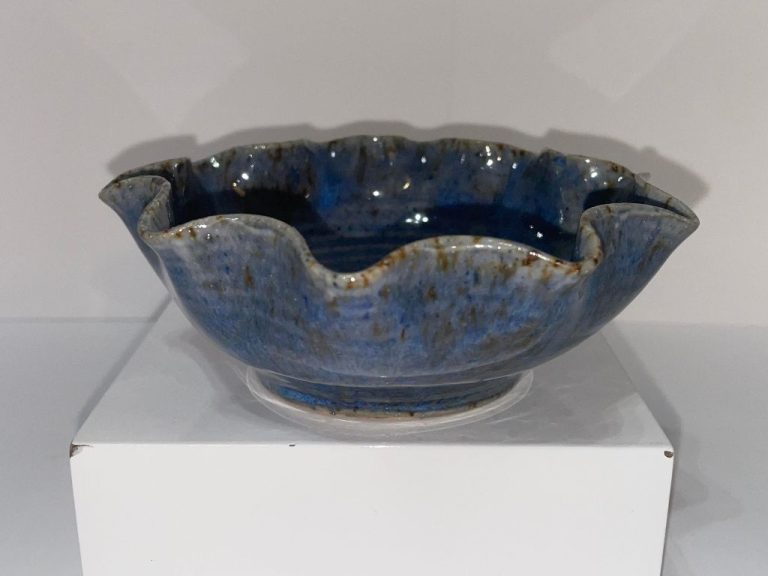What Kind Of Brick Is Fireproof?
Fireproof bricks, also known as refractory bricks, are specifically designed to withstand high temperatures and fire without breaking down or burning. According to SomnusThera, they are made from non-combustible refractory materials that can resist temperatures above 1000°C.
The main purpose of fireproof bricks is to provide fire protection and insulation in building construction, as well as industrial applications like furnaces and kilns. They are a key component of passive fire protection systems and are used to construct firewalls that prevent the spread of fire between compartments or structures. Fireproof bricks are also used to line high-temperature devices like fireplaces, ovens, and chimneys to protect the surrounding materials from heat damage.
Overall, fireproof bricks allow buildings and equipment to withstand fire, limiting fire spread and structural collapse. Their unique composition and properties make them an essential material for fire safety in many construction and industrial contexts.
Types of Fireproof Bricks
There are several major types of fireproof bricks commonly used in construction and industry:
Silica bricks: Silica bricks are made of silica or quartz sand. They have high refractoriness and can withstand temperatures up to 1650°C. Silica bricks have low thermal conductivity so they provide good insulation. They are resistant to basic slags and are used in furnaces, kilns, and incinerators. [1]
Magnesite bricks: Magnesite bricks are made of magnesite, a magnesium carbonate mineral. They can withstand high temperatures up to 1800°C. Magnesite bricks are resistant to thermal shock and alkaline slags. They are used in cement kilns, glass furnaces, and electric arc furnaces. [1]
Alumina bricks: Alumina bricks contain a high percentage of alumina (aluminum oxide). They have high refractoriness up to 1830°C and are resistant to most corrosive slags. Alumina bricks are used in furnaces, kilns, and other high-temperature applications. [2]
Fire clay bricks: Fire clay bricks are made of special refractory clays which can withstand high temperatures. They have good thermal insulation properties. Fire clay bricks are commonly used to line furnaces, fireplaces, and chimneys. [2]
How Fireproof Bricks Work
Fireproof bricks, also known as refractory bricks, are designed to withstand extremely high temperatures while providing insulation. There are several properties that enable firebricks to resist heat:
Withstand high temperatures – Firebricks are typically rated for temperatures ranging from 1600°F to 3000°F. They are composed of special refractory clays that can resist melting, softening, or structural damage when exposed to high heats.
Low thermal conductivity – Firebricks have low thermal conductivity, meaning they transmit heat slowly. This helps prevent excessive heat transfer to the surrounding structure. The brick’s composition and porous design minimize conduction.
Resist cracking – As firebricks heat up, they experience some expansion. However, firebricks are designed to resist thermal shock cracks. Their composition allows them to expand and contract without cracking or spalling during rapid temperature changes.
Firebricks achieve these high-temperature capabilities through careful selection of refractory clays as well as manufacturing processes that control density, porosity, and structural integrity at elevated temperatures. The chemical and mineral composition of the raw materials is key to optimizing properties like refractoriness and low thermal conductivity.
Manufacturing Process
The manufacturing process of fireproof bricks involves several steps:
Raw Materials
The main raw materials used are refractory clays, quartz, alumina, and calcined bauxite. Other additives include iron oxide, sodium silicate, and magnesium oxide which help control thermal and physical properties.
Mixing
The raw materials are proportioned and mixed thoroughly with water in a mixer to obtain a plastic consistency. This homogeneous mixture is easier for molding.
Molding
The clay mixture is molded into the desired shapes either by hand or by machine. The most common methods are soft mud extrusion and stiff mud pressing between steel dies.
Drying
The molded bricks are air-dried to remove the moisture gently without cracking and distortion of bricks. The drying rate is controlled to allow even drying throughout.
Firing
The dried bricks are fired in kilns at high temperatures ranging from 1000-1600°C depending on the type of brick. Firing develops ceramic bonding giving strength and low porosity.
Fire Ratings
Fire ratings are used to classify bricks based on the length of time they can withstand fire exposure before failing or allowing the passage of hot gases or flames. Common fire ratings for bricks include (cite https://www.magnoliabrick.com/are-all-bricks-fire-resistant-understanding-brick-fire-ratings):
- 1 hour fire rated – Withstands flames for 1 hour before failure
- 2 hour fire rated – Withstands flames for 2 hours before failure
- 3 hour fire rated – Withstands flames for 3 hours before failure
- 4 hour fire rated – Withstands flames for 4 hours before failure
Higher fire ratings indicate bricks that are more resistant to fire and heat. Bricks with a 1 hour fire rating are considered the minimum for residential uses, while commercial and industrial buildings often require at least 2 hours. Fireproofing requirements depend on building codes and the proposed use of the structure (cite https://www.gobrick.com/media/file/16-fire-resistance-of-brick-masonry.pdf).
To achieve higher fire ratings, bricks are manufactured using clays with increased alumina content that can withstand higher temperatures. The thickness of the brick wall also impacts the fire rating. Thicker walls with multiple wythes generally have improved fire resistance.
Installation
Proper installation of fireproof bricks is critical for safety and performance. Fireproof bricks should be installed with a fireproof mortar designed for high heat applications. Two common mortar types used are calcium aluminate and phosphate bonded mortars, which can withstand temperatures up to 1800°F and 3000°F respectively (General Catalogue). These speciality mortars create a strong bond and seal between bricks.
Fireproof bricks need to be spaced properly to allow for expansion and prevent cracking. The standard joint thickness for firebrick is 1/4 inch. The brickwork pattern used, such as running bond or herringbone patterns, should have these 1/4 inch joints throughout (Morfex – Lamco). Proper spacing and patterns ensure stability of the installation and ability to withstand high heat conditions.
Maintenance
Regular inspection and maintenance is crucial for ensuring fireproof bricks remain in good condition. Over time, the extreme heat from fires can cause cracking, erosion, and damage to the bricks and mortar joints. It’s recommended to implement a routine maintenance program to periodically inspect the condition of the firebricks and mortar.
Look closely for any cracks, chips, pits, or gaps forming in the bricks, and check that the mortar between bricks is intact. Repointing any cracked or deteriorating mortar is essential for preventing further damage. Use a special high-heat mortar or refractory cement designed for firebricks when repointing (Source). Carefully scrape out old mortar, clean the joint, and tuck new mortar into gaps.
Severely cracked or broken bricks may need replacement. It’s recommended to consult a professional if extensive repairs are needed, as improper installation can impact the fireproofing ability. With routine inspection and proper maintenance, fireproof bricks can provide long lasting protection.
Cost
Fireproof bricks typically cost more than standard bricks due to the specialized materials and manufacturing processes required.https://dictionary.cambridge.org/dictionary/english/fireproof The price per fireproof brick can range anywhere from $2-10 depending on the type and quality.https://archive.org/stream/westernarchitect09unse/westernarchitect09unse_djvu.txt
When calculating total installed cost, other factors like labor and shipping must be considered as well. Since fireproof bricks require specialized installation techniques, labor costs may be higher compared to standard bricks. The total installed cost can vary greatly based on the size and scope of the project.
It’s important to get an accurate estimate from suppliers and contractors when budgeting for fireproof brick projects. While the material cost per brick is higher, the added fire safety and durability can make it a wise long-term investment for many applications.
Safety
When cutting or modifying fireproof bricks, proper personal protective equipment (PPE) should be worn to minimize exposure to hazardous dust. According to the Occupational Safety and Health Administration (OSHA), masons cutting brick products should wear an N95 respirator mask or better to protect against silica dust inhalation (OSHA Respiratory Protection Guidance). Gloves, safety glasses, and coveralls should also be worn.
Inhaling silica dust from fireproof bricks can lead to lung diseases like silicosis, lung cancer, chronic obstructive pulmonary disease, and kidney disease. Proper ventilation should be used when cutting bricks to minimize dust accumulation. Using water or vacuums when cutting can also reduce dust levels (Brick Industry Association Silica Guidance). Following safety protocols is critical to mitigate respiratory risks.
Notable Uses
Fireproof bricks are commonly used in high temperature applications where regular bricks would fail or melt. Some of the most notable uses include:
- Industrial furnaces – Fireproof bricks line the interior walls and floors of furnaces used for metal processing, glassmaking, and other high temperature industrial processes. The bricks withstand temperatures up to 3000°F.
- Fireplaces – Firebricks make up the firebox, which contains and reflects the fire’s heat into the room. Standard bricks would crack from the heat.
- Commercial kitchens – Firebricks protect commercial pizza ovens, grills, and other cooking equipment from intense heat. Temperatures can exceed 1000°F.
Fireproof bricks allow these structures to contain and withstand very high temperatures that would damage regular masonry. Their refractory properties make them an essential material for certain industrial and residential applications.



